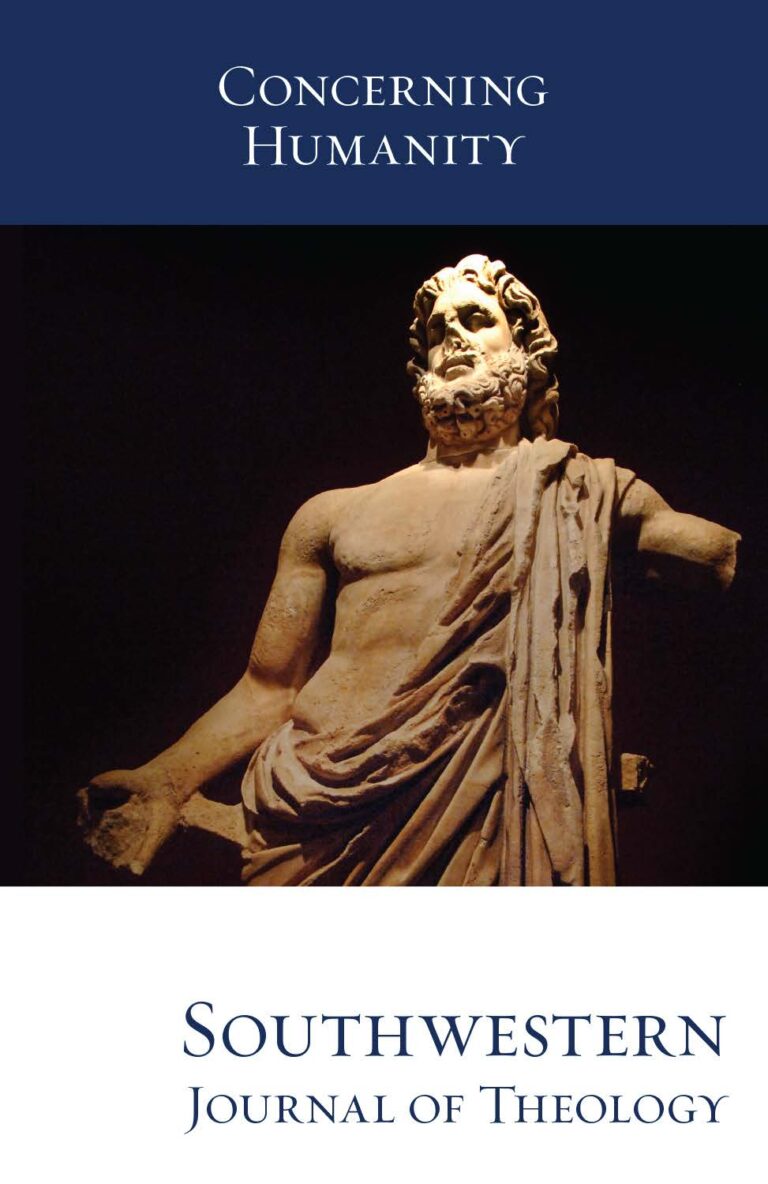
Concerning Humanity
Southwestern Journal of Theology
Volume 59, No. 1 – Fall 2016
Managing Editor: W. Madison Grace II
By G.K. Beale and Benjamin L. Gladd. Downers Grove: IVP Academic, 2014. 392 pages. Paperback, $30.00.
One may be surprised to discover, as were G.K. Beale and Benjamin Gladd (hereafter, B&G), that until Hidden But Now Revealed, “a complete study of mystery in the New Testament” and reflection “on the biblical-theological implications of such a study” had not been attempted (7). As B&G also indicate, this dearth of studies is due to the project’s sheer difficulty. The Greek term μυστήριον occurs in difficult passages concerning key doctrines and typically proving instrumental in the relationship between the two Testaments (7–8). Subsequently, one primary purpose of this study is “to unpack the relationship between the Old and New Testaments” (19). The two primary goals are: (1) to define the Old Testament and New Testament conception of mystery and to grasp its significance, and (2) to articulate as precisely as possible topics found in conjunction with “mystery” in its various uses throughout the New Testament (21–22).
Anticipating the charge of “illegitimate totality transfer” (a famous critique of James Barr against the Theological Dictionary of the New Testament, and a danger inherent in any word-focused project), B&G are quick to point out the technical nature of the term “mystery” and thus its general immunity from such a critique. Even so, B&G carefully undertake in each chapter an investigation of the immediate context of the passage where the term appears, and its connection with other words and phrases (20–21).
Chapters 1 and 2 are introductory. The former canvasses “mystery” in Daniel 2 and 4 while the latter examines evidence from various early Jewish texts. In Daniel the term “mystery” plays a pivotal role and informs use of “mystery” in the New Testament (29). B&G conclude that revelation of a mystery can be defined roughly as “God fully disclosing wisdom about end-time events that were mostly hitherto unknown” (43). Mystery in Daniel entails a twofold characteristic wherein an individual first receives a symbolic dream which is then fully interpreted, signaling “the hidden nature of the revelation and its subsequent interpretation–largely hidden but now more fully revealed” (43). Early Jewish texts explored in chapter 2 generally maintain the eschatological nature of “mystery,” as well as its twofold aspect (53).
Chapters 3–10 contain a detailed study of the twenty-eight instances of μυστήριον in the New Testament and their respective contexts and significance for biblical theology. B&G highlight that features of “mystery” laid out in chapter 1, that is, the eschatological emphasis and twofold characteristic, occur overwhelmingly in these contexts. They also emphasize the lines of continuity and discontinuity between testaments when discussing topics related to “mystery”. Frequently the “mystery” in the New Testament fulfills an Old Testament prophecy or prototype in a surprising way, remaining in continuity with the Old Testament but also introducing new elements.
Following their examination of the New Testament texts concerning mystery, they draw the work to a close. In part, they address the relationship, or lack thereof, between Christian mystery and pagan mystery religions, concluding that scholars who have attempted to draw parallels have been “overly confident and going in the wrong direction,” since “the biblical conception of mystery not only differs from the mystery religions, but also contradicts the pagan understanding of the term and concept in many ways” (312). Following the conclusion, Beale appends a thoughtprovoking essay addressing instances where a New Testament quotation of the Old Testament appears “on the surface to have a very different meaning than the Old Testament passages from which they come” (340). To reconcile this apparent disjunction, Beale proposes taking account of the author’s “cognitive peripheral vision,” recognizing that Old Testament authors “knew more about the topic of their speech act than only the explicit meaning they expressed about that topic” and that New Testament authors picked up on and developed the Old Testament author’s “implicit wider intention” (341). Though such an approach may seem speculative, Beale is convinced the speculation can be “controlled” and provides helpful insights into the New Testament authors’ use of the Old Testament (363).
This book may serve as a model for how word studies ought to be done, with the meaning(s) of the word drawn from the biblical text itself, both its immediate context and its place in salvation history. Such an approach eschews overly simplistic statements about the term’s definition, requiring the interpreter to account for every occurrence. Though B&G are right to emphasize the term’s technical nature and thus their ability to “overload” it with nuance, a few instances where attempts to fit a particular use of the term into the overarching scheme feel a bit forced (for instance, see discussion of 1 Cor 13:2 and 14:2).
Amidst chapters dealing with μυστήριον in the New Testament, it is easy for the reader to get bogged down in the technical details. But such attention to detail raises the book’s potential as a future reference for specific passages. Some of the most outstanding chapters were actually the introductory and concluding chapters, and the appendix on “cognitive peripheral vision.” These chapters help the reader see how extensive the implications of the study might be while Beale’s appendix proves particularly thought-provoking.
In Hidden but Now Revealed, B&G provide an in–depth and useful examination of a very difficult and often confusing biblical theme, as well as thoughtful insights and potential paths forward in the discussion of the New Testament use of the Old Testament. In a field where the constant tug-of-war between unity and diversity is ever present, the authors do an excellent job of representing the diversity of the New Testament witnesses while still demonstrating their unified purpose and use of the Old Testament. Evangelicals hoping to contribute meaningfully to biblical theology should emulate this model.





